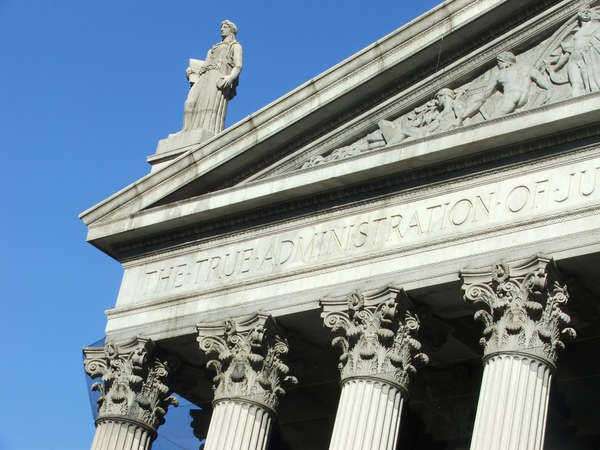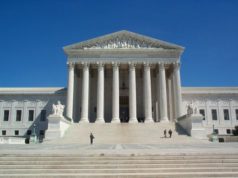
The Equal Protection Clause is one of the most significant provisions in the United States Constitution. It is part of the Fourteenth Amendment, which was ratified in 1868 in response to the Civil War and the need to ensure the citizenship rights of newly-freed slaves. The clause states that no state shall “deny to any person within its jurisdiction the equal protection of the laws.” This means that all individuals, regardless of their race, gender, religion, or any other characteristic, have the right to equal treatment under the law.
The Equal Protection Clause has been the basis for several landmark Supreme Court cases throughout American history. In Brown v. Board of Education (1954), the Court struck down the “separate but equal” doctrine in public education, ruling that racial segregation in schools was inherently unequal and violated the Equal Protection Clause. In Loving v. Virginia (1967), the Court found that state laws restricting interracial marriage were also unconstitutional under the Equal Protection Clause. In Obergefell v. Hodges (2015), the Court legalized same-sex marriage nationwide, again citing the Equal Protection Clause.
While the Equal Protection Clause has been used to protect the rights of minority groups and marginalized individuals, it has also been the subject of controversy and criticism. Some opponents argue that the clause has been interpreted too broadly, leading to a “judicial activism” that threatens states’ rights and undermines the democratic process. Others claim that certain groups, such as white males, are actually disadvantaged by the Equal Protection Clause’s emphasis on equality and diversity.
Despite these debates, the Equal Protection Clause remains a vital component of American constitutional law. It serves as a constant reminder that justice and fairness should be extended to all citizens, regardless of their background or beliefs. As former Supreme Court Justice Thurgood Marshall once said, “The Constitution does not prohibit legislatures from enacting stupid laws. But stupid laws offend the Equal Protection Clause in ways that impermissible discriminatory laws do not.”
The Equal Protection Clause is part of the Fourteenth Amendment to the United States Constitution. Many view it as the attempt to uphold the professed “all men are created equal” clause written in the Constitution. The Equal protection law implies that no State has the right to deny anyone within jurisdiction equal protection of the law. The implementation of the Equal Protection Clause marked a pivotal point in the American Constitution. Before the Equal Protection Clause (part of the Fourteenth Amendment), the Bill of Rights was only limited to the protection of individuals from the Federal Government. Once the Fourteenth Amendment was enacted, the Constitution was extended to provide protection from State governments.
The Fourteenth Amendment was implemented in 1868, a short time after the American Civil War. It preceded the Thirteenth Amendment which abolished slavery, leading many former Confederate states to adopt Black Codes after the Civil War.To combat the list of Black Codes enacted in Southern states, Congress imposed the Civil Rights Act of 1866. This The act was a direct effect of the U.S. Supreme Court decision in the Dred Scott v. Sanford case. The law required that all citizen regardless of race and color have equal benefits of all laws, as enjoyed by white citizens. The doubts that arose with the law under the Constitution that was in existence then lead Congress to implement changes to the Constitution, which became known as the Equal Protection Clause of the Fourteenth Amendment.
In order to ensure the fair practice of the Equal Protection Clause, the U.S. Supreme Court decided to apply different tests to the different State classifications and its response to fundamental rights. Usually, the Court finds a State classification Constitutional as long as it has a “rational basis” to a “legitimate state purpose”. The U.S. Supreme Court, however, established a firmer sense of analysis to certain cases. To measure the form of equal protection it will scrutinize any distinction when it encounters suspect classifications. When the Supreme Court orders a classification subject to scrutiny, it must have the substance that a State law or the State’s administration holds intentions to discriminate.
If any intent of a State law provides discrimination, the U.S. Supreme Court further analyzes the basis of race, national origin, and in some cases U.S. citizenship. In order for a classification to pass a U.S. Supreme test, the State must prove that there is an imperative interest to the law and the classification is needed to further its interest. The U.S. Supreme Court will also apply strict scrutiny if any classification interferes with the fundamental rights, such as the First Amendment, the right to travel, or a person’s right to privacy. The The Equal Protection Clause was implemented to ensure the fair treatment of all legal citizens of the United States. All states must comply with the rulings of the Supreme Court, which continuously reviews the laws applied by each State to ensure it is following guidelines of fair practice and treatment.

























